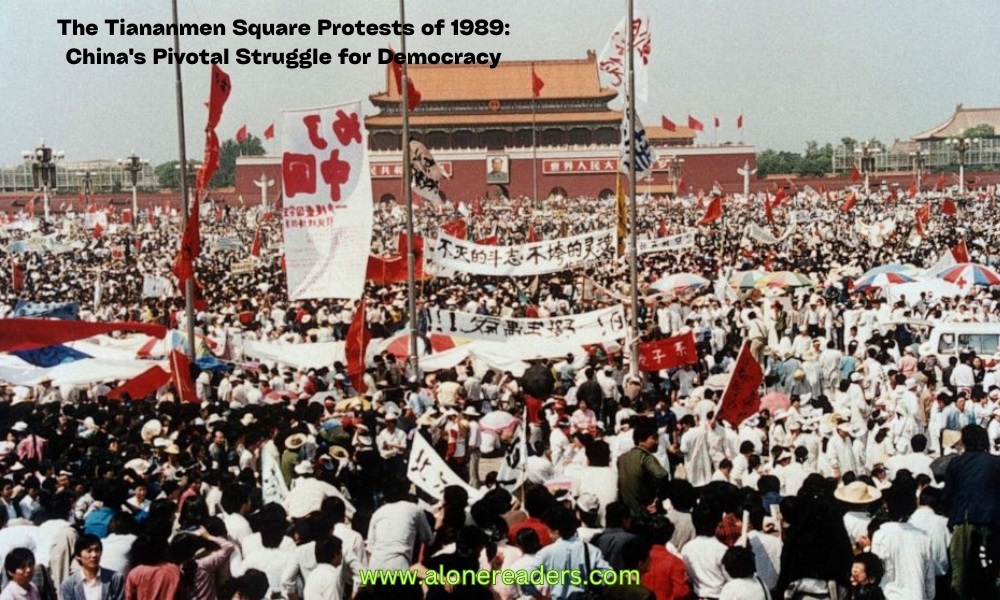
In the annals of modern history, few events have captured the global imagination and evoked the stirrings of collective conscience as profoundly as the Tiananmen Square Protests of 1989. Occurring in the heart of Beijing, China, these protests marked a watershed moment in the country's complex and tumultuous journey towards modernization and reform.
The roots of the Tiananmen Square protests can be traced back to the death of Hu Yaobang, a reform-minded leader in the Communist Party of China. Hu was a symbol of political liberalization and his sudden death on April 15, 1989, triggered an outpouring of grief and unrest among the populace, particularly the youth. Students from Beijing's universities, imbued with a fervor for change, congregated at Tiananmen Square to mourn Hu's death, but the gathering swiftly transformed into a broader demonstration advocating for greater political openness, freedom of speech, and an end to corruption within the party.
As days turned into weeks, the number of protesters swelled into hundreds of thousands, with people from all walks of life joining the students in a remarkable show of solidarity. The Square became a symbol of hope and defiance, a microcosm of a society yearning for change. The protesters, using makeshift tents and banners, established a semi-permanent presence in the Square, devising a community that was both a beacon of democracy and a challenge to the status quo.
The Chinese government, initially tolerant, grew increasingly uncomfortable with the protest's escalating demand for democratic reforms. The presence of the protestors in Tiananmen Square, at the heart of Beijing and in the shadow of significant symbols of Chinese authority, was seen as an intolerable affront to the ruling Communist Party. Internal divisions within the party leadership about how to handle the demonstrations led to a paralysis of sorts, with some advocating for dialogue and others for a firmer response.
The situation reached a boiling point in late May, when the government declared martial law. Tensions escalated further when on the night of June 3rd and into the early hours of June 4th, the People's Liberation Army was ordered to clear the Square. The use of military force against unarmed civilians shocked the world. Tanks and soldiers advanced on Tiananmen Square, with reports of gunfire, casualties, and chaos shrouding the events in a fog of horror and disbelief. The most indelible image from these tragic hours would be that of an unknown protester, often referred to as "Tank Man," standing defiantly in front of a column of tanks, a symbol of individual courage against overwhelming power.
The aftermath of the Tiananmen Square crackdown was immediate and severe. The Chinese government embarked on a campaign to suppress dissent, with arrests, trials, and alleged human rights abuses reported in the following months. Internationally, the incident resulted in widespread condemnation, sanctions, and a reevaluation of diplomatic relations with China.
However, the legacy of the Tiananmen Square protests extends far beyond its immediate consequences. It served as a powerful demonstration of the Chinese people's aspirations for political reform and personal freedoms. The protests highlighted the complexities of China's path towards modernization, torn between the preservation of its authoritarian political structure and the pressures of societal demands for greater openness and democratic governance.
In the years since 1989, China has experienced unprecedented economic growth and has emerged as a global superpower. However, the events at Tiananmen Square remain a sensitive and largely censored topic within China, emblematic of the ongoing struggle between state control and the quest for political and social freedoms.
In conclusion, the Tiananmen Square protests of 1989 were more than just a fleeting moment in history; they were a crucible of change, reflecting the enduring human desire for freedom, democracy, and justice. While the immediate aims of the protestors were not realized, the legacy of their courage and sacrifice continues to resonate, reminding us of the price often paid in the pursuit of these universal values. As China continues to evolve, the memory of Tiananmen Square serves as both a cautionary tale and a beacon of hope for future generations seeking to balance tradition with transformation in their quest for a more open and democratic society.